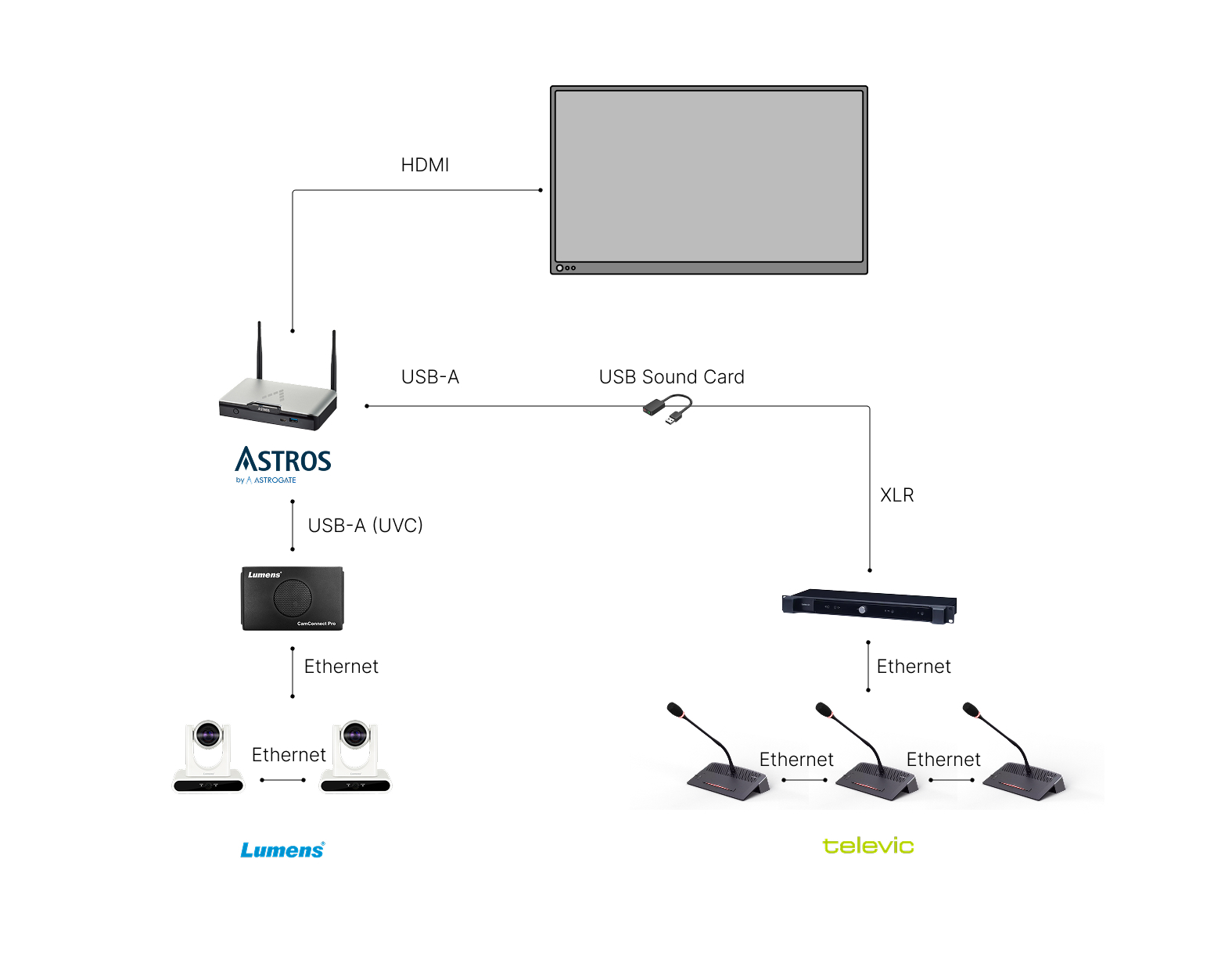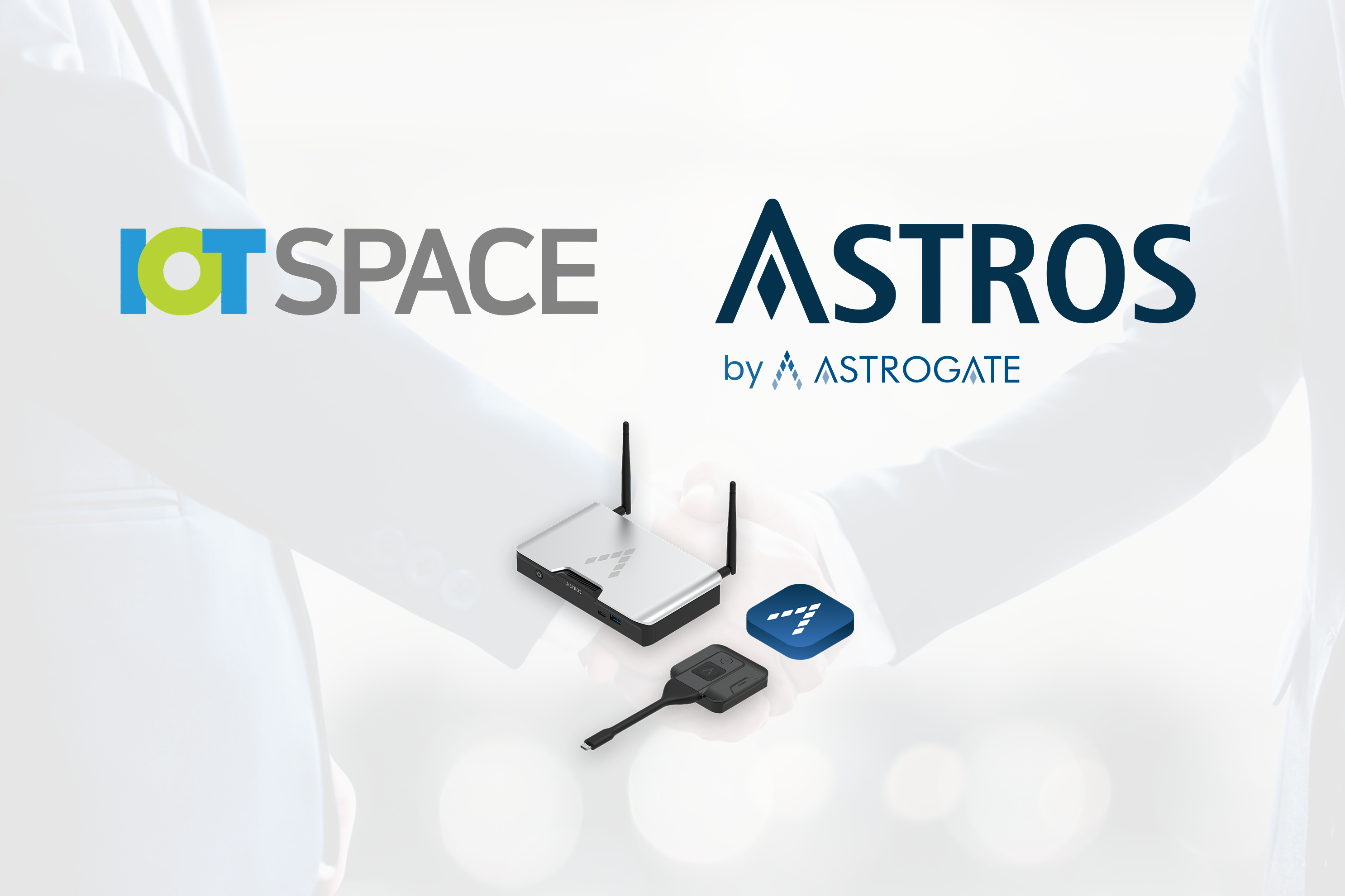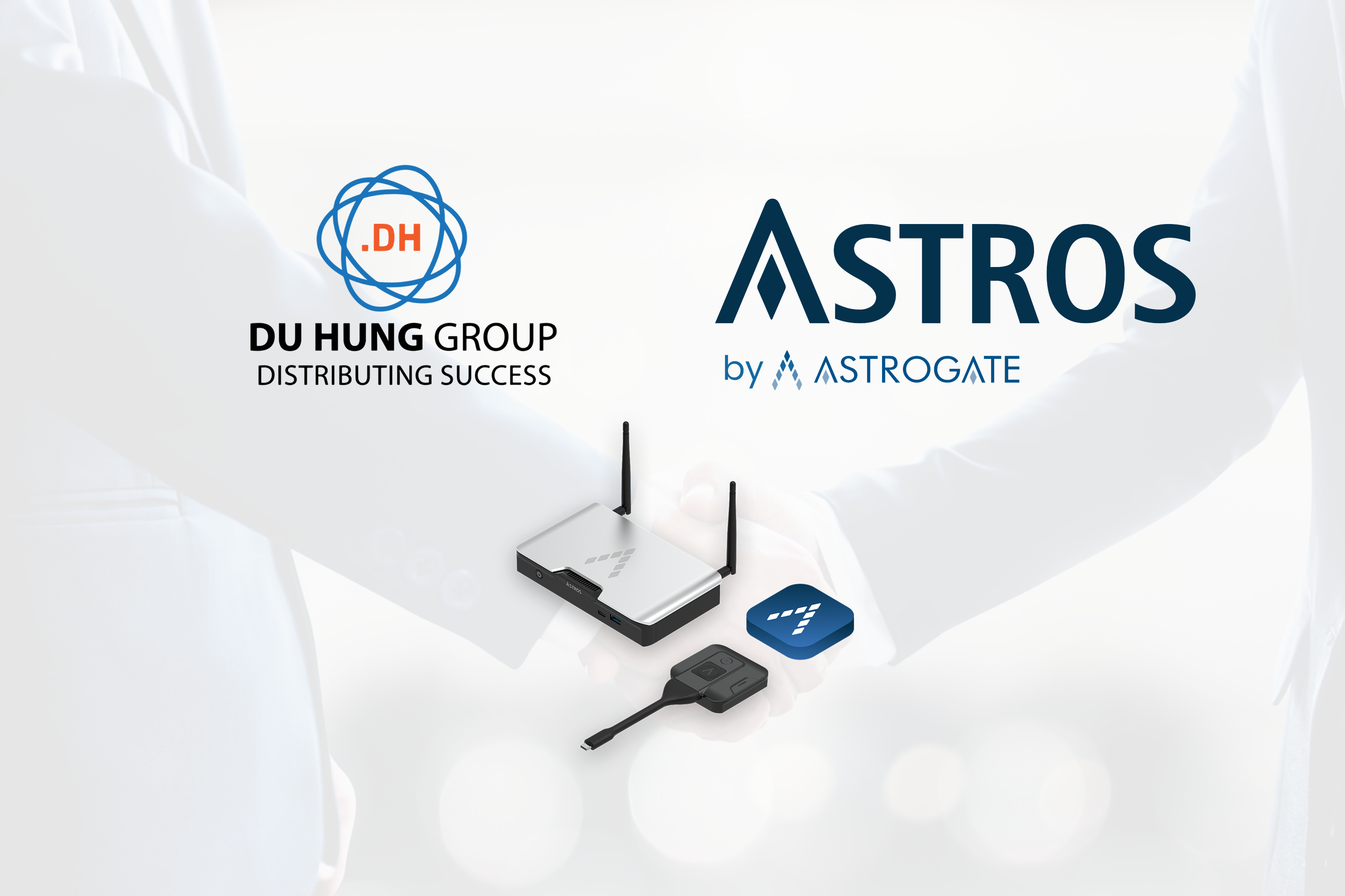Astrogate x Televic x Lumens: Collaboration & Integration for Smarter Meetings
Integrated Audio and Visual, Smarter Meetings Happen

With hybrid work on the rise, businesses are seeking ways to make meetings seamless and efficient. A wireless conference room eliminates cables, enhances collaboration, and provides flexibility for both in-office and remote participants. Here’s a step-by-step guide to creating a wireless-enabled meeting space.
Flexibility and Mobility: Connect laptops, tablets, or smartphones without cables, allowing participants to move freely and engage more actively.
Simplified Setup: Quick installation reduces time spent on cables, adapters, and troubleshooting.
Enhanced Collaboration: Multiple participants can share content simultaneously, fostering real-time discussions.
Efficient Workspace: Less clutter and optimized resource utilization improve the overall environment.
A well-positioned access point ensures strong, reliable connectivity for all wireless devices in the room, supporting presentations, video calls, and cloud-based apps.
Ensure your network can handle wireless traffic efficiently. Consider upgrading routers, switches, and cables to support stable, high-speed connections.
Modern wireless solutions like ASTROS allow seamless screen sharing from any device. Key features include:
Window Sharing: Share specific apps or the entire screen without interruptions from pop-ups.
Split Screen: Up to 4 devices can display simultaneously for comparison and collaboration.
Wireless Conferencing (ASTROS Conference): Integrates video platforms like Teams, Zoom, and Google Meet for immersive hybrid meetings.
Annotation Tools & Whiteboard: Enhance presentations with real-time annotations and collaborative visual aids.
Use high-quality cameras with auto-tracking and wide-angle lenses, paired with echo-cancellation microphones and noise reduction, to ensure clear audio and video for all participants.
Implement WPA2 or WPA3 encryption, strong passwords, and regular firmware updates to protect your network and sensitive information from unauthorized access.
Conduct thorough testing of connectivity, audio, video, and screen sharing to identify and fix issues before live meetings, ensuring a seamless experience.
Creating a wireless conference room boosts productivity, collaboration, and engagement. By following these steps and leveraging solutions like ASTROS wireless presentation and conferencing, your team can enjoy flexible, secure, and efficient meetings, whether in-office or remote.

Integrated Audio and Visual, Smarter Meetings Happen

Astrogate is proud to announce an important milestone in our global expansion — the appointment of IOTSPACE as our new Regional Partner in Korea.

[Taipei, Taiwan – September 2025] – Astrogate Technology, a leading provider of wireless presentation and conferencing solutions, is proud to...